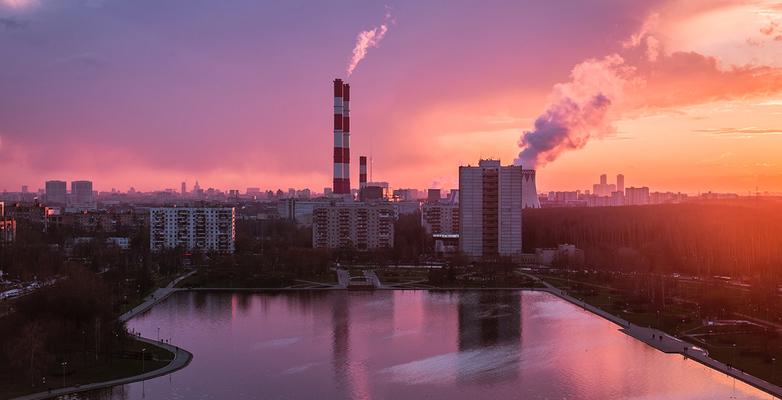
Sacrifice Zones 101
THE BASICS
Sacrifice zones are often defined as populated areas with high levels of pollution and environmental hazards, thanks to nearby toxic or polluting industrial facilities. These areas are called “sacrifice zones” because the health and safety of people in these communities is being effectively sacrificed for the economic gains and prosperity of others.
How do places become sacrifice zones? One factor is the absence of proper government regulation. Another is that many times, people living in these areas lack either access to the information to know about the pollution poisoning their community or the power to make policymakers do something about it. In many cases, they are, as legendary activist Dr. Robert Bullard has said, “the wrong complexion for protection” under the law.
WORSE HEALTH OUTCOMES
No surprise, individuals who live constantly exposed to high levels of pollution often end up facing worse health outcomes and long-term ailments. Especially if they’re children, with Black children particularly vulnerable. Air pollution is linked to conditions such as asthma and respiratory illness. And groundwater contamination can result in diseases including cancer and organ damage.
But for many people living in sacrifice zones, they don’t need a wealth of sociological and scientific data to tell them pollution is making them sick. They see it every day.
ENVIRONMENTAL RACISM IN ACTION
If you want to see environmental racism in action, you only have to look at St. Gabriel, Louisiana, located along the stretch of the Mississippi running from New Orleans to Baton Rouge known as “Cancer Alley.”
Cancer Alley got its name thanks to the high concentration of chemical and fossil fuel plants spewing dangerous pollution. Thanks in part to these plants – often built near poor and Black towns without the political muscle to block them – not only does Louisiana have the most toxic air in the nation, but some parts have cancer risks 50 times the national average.
St. Gabriel exemplifies some of these factors. Two-thirds of the town’s 7,300 residents are Black and the poverty rate touches 29% - compared to a 2019 national rate of 10%. And St. Gabriel has chemical plants – lots of them – with families living with an astounding 30 chemical plants within just 10 miles of their homes. As a result, one resident reports that “Out of every 10 houses, there’s a prospect of one or two people that have died of cancer.”
Cancer Alley is far from unique. Across the US, nearly half of those living in fenceline areas close to industrial pollution are people of color and nearly two-thirds of children living within one mile of a high-risk chemical site are children of color. In fact, Black people in the US are “79 percent more likely” than white people to live in places where industrial pollution is highest.
So how did we get here? In many instances, sacrifice zones arise due to racist practices like redlining, where banks, urban planners, and real estate agents effectively limit families of color from living outside of limited areas on a map (the name comes from the practice of literally outlining in red certain parts of town). Then when corporations are looking for places to site facilities, they go to where people lack the political power to stop them – which more often than not are home to racial minority groups – and are almost always low income.
That doesn’t just happen on its own. And income levels alone don’t explain it. This type of environmental racism is a clear example of environmental injustice.
STOP SACRIFICING OUR FAMILIES
There cannot be environmental justice as long as there are sacrifice zones that trade the health of communities of color for someone else’s bottom line. Because that’s exactly what’s happening. If there are reasons to hope here, they come from the fact that activists are organizing campaigns to eradicate sacrifice zone by restoring power to affected communities, and holding Big Polluters accountable. In addition, President Biden’s executive order on climate mandates that the federal government support projects that cut down harmful pollutants from fossil fuel facilities and otherwise bring a focus on environmental justice to the entire administration.
COVID-19 AND SACRIFICE ZONES
The COVID-19 pandemic has exposed the racial and economic divisions in quality of air, access to medical care and more. In sacrifice zones, the virus has ravaged communities. High levels of air pollution appear to be linked to elevated COVID-19 mortality rates, which have put communities surrounded by hazardous facilities in additional peril.
QUICK FACTS
- Sacrifice zones are areas where residents are subjected to heightened levels of pollution and hazardous materials, despite the adverse impacts on their health.
- Sacrifice zones are part of a legacy of environmental racism and environmental injustice that has resulted in people of color being significantly more likely than white people to experience polluted air and groundwater.
- Those who live in sacrifice zones are far more likely to develop conditions such as asthma, respiratory disease, and cancer as a result of their environment.
- Sacrifice zones are a moral stain on the nation. No community should have to trade its health to fuel the prosperity of another.

